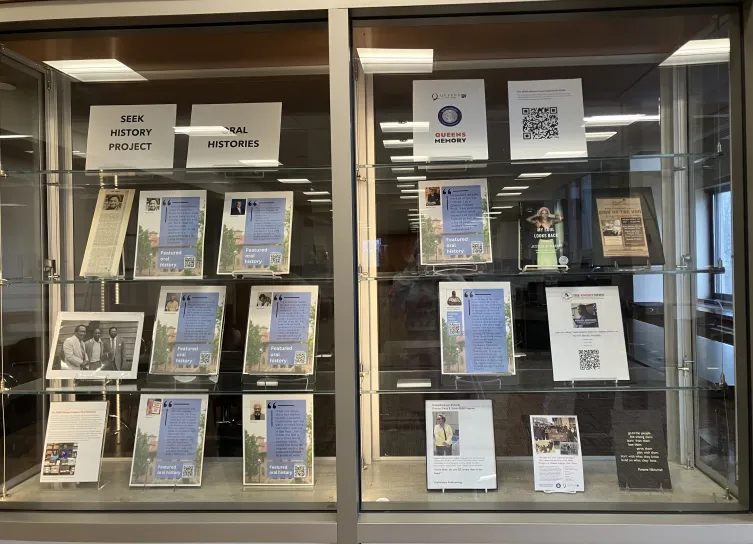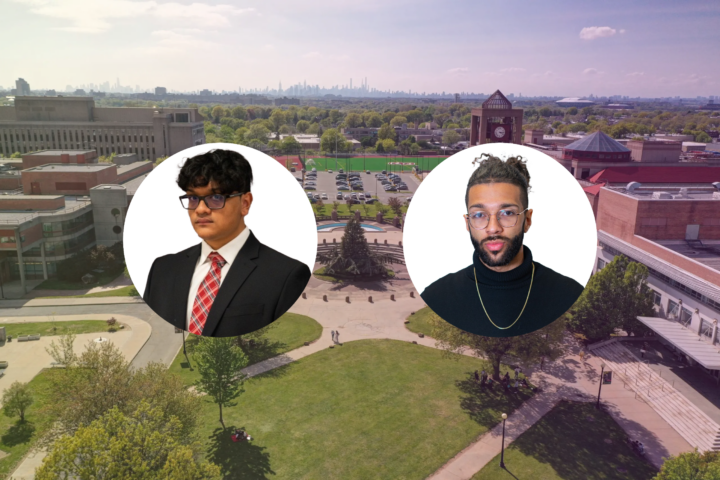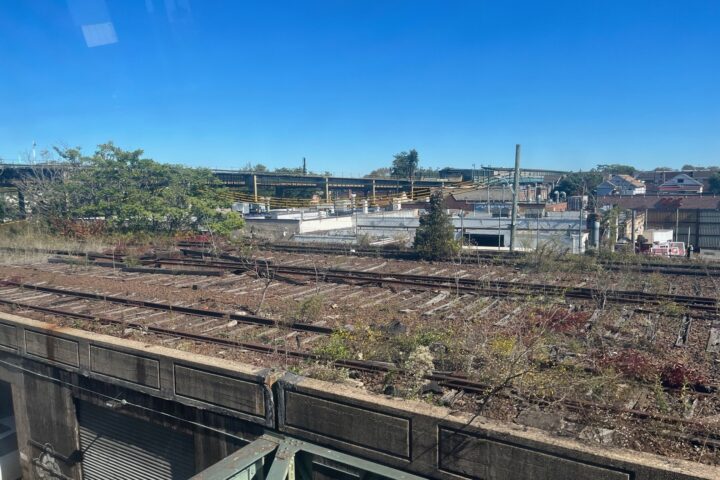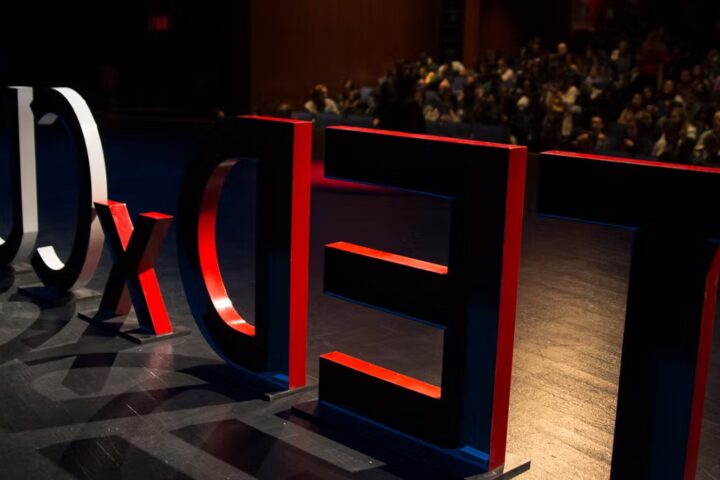If you’re a student at Queens College, it’s possible you haven’t been to the Benjamin S. Rosenthal Library at all. Not only is it a massive source of information and resources, it’s also a great place to sit and do work, if you haven’t.
If you have, you may have walked past a glass room on the far side of the main floor. Inside are a variety of electronic devices, and labeled in black print on the main pane of glass is the Memory Lab. However, the room is not open, and much of the equipment is not operative, leaving the question: what this Memory Lab is for?
The QC Memory Lab is an intended extension of the Queens Memory Project — a program sponsored by QC and the Queens Public Library devoted to collecting and archiving stories, oral histories, and images of life in and the history of Queens borough.
Construction of the Memory Lab was halted in 2020 due to the pandemic, and it was ultimately canceled due to lack of staff and budget constraints. Nonetheless, many of the other useful and interesting resources of the Queens Memory Project are accessible within the bounds of QC.
Close to the Memory Lab, at the entrance of the Charles J. Tanenbaum Room, there is a collection of flyers on display. These flyers advertise a collection of oral histories, each one containing an excerpted quote and a QR code that, if scanned, leads you to the full record.
They come from both Queens Memory and the Search for Education, Elevation and Knowledge (SEEK) History Project, an initiative that is supported by Queens Memory. One featured oral history is that of Khaleel Anderson, a Queens College alum who recently became the youngest Black Assemblymember in New York State. Many of the oral histories featured in the rotunda gallery, visible to those just entering the library, were provided by Queens Memory.
According to Queens Memory Outreach Coordinator, Lori Wallach, “The goal is to document and to preserve, and have a place to preserve, accounts of life lived in the borough of Queens — not just the history of Queens, but a contemporary of life as it’s lived in Queens.”
An emphasis is placed on including “the entire diversity that makes up Queens.”
The basis of the collection is an archive of oral histories, which are organized into multiple collections — such as COVID-19, LGBTQ+ history, and Memories of Migration — although if you’re looking for a specific person, the search function works very well.
It’s a rich source of resources, be it for a history paper or just to indulge an interest in learning about the life and times of Queens and its inhabitants. The archive contains accounts from people from all walks of life, all connected under the shared umbrella of Queens.
Queens Memory is not just a static archive of information, either.
“A lot of times I’ll work with classes where a component of their class project is interviewing people or collecting photos, and they’ll submit that to us.” Wallach said. “We try to reach out as much as we can, to faculty and to students.”
The project’s origins are quite humble and close to home; it was founded by Natalie Milbrodt, a QC graduate student, in 2010 as a student project. If any current QC student wants to get involved with Queens Memory, there’s plenty of opportunity for you to do so.
Wallach shared that the organization is “open to any student who wants to volunteer with us.” If a student wanted to interview someone from Queens, Wallach offered to teach how to do an oral history interview or to loan out and give training on relevant equipment.
When the interview is completed, the organization will preserve it. If a student does not want to interview but still wants to contribute, there is the option to work on transcripts of the oral histories or to take pictures of events around Queens.
The QC Memory Project’s oral history archives can be accessed here.











